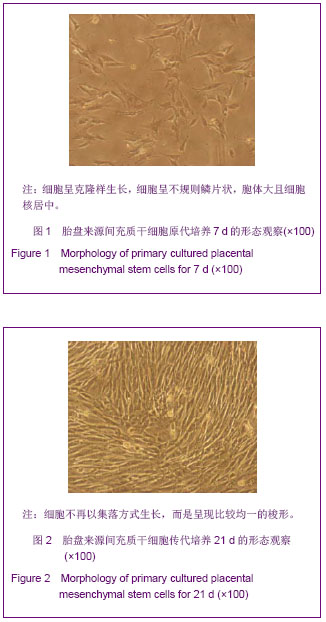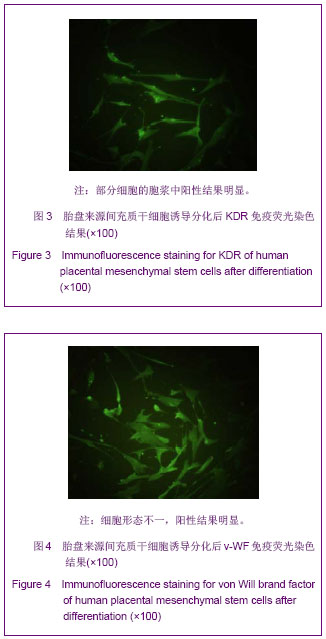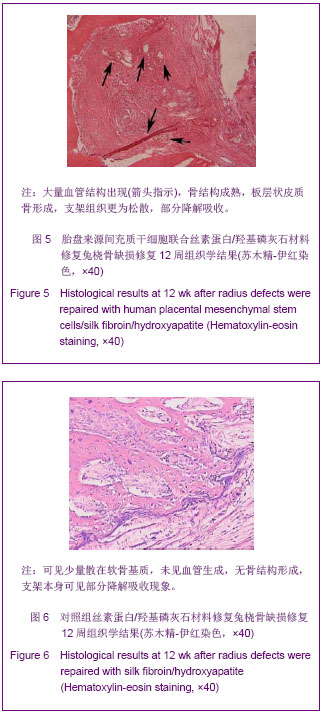| [1]Rose FR,Oreffo RO. Bone tissue engineering: hope vs hype. Biochem Biophys Res Commun. 2002;292(1):1-7.[2]Bhumiratana S, Vunjak-Novakovic G. Concise review: personalized human bone grafts for reconstructing head and face. Stem Cells Transl Med. 2012;1(1):64-69.[3]Ogawa M, Tohma Y, Ohgushi H, et al. Early Fixation of Cobalt-Chromium Based Alloy Surgical Implants to Bone Using a Tissue-engineering Approach. Int J Mol Sci. 2012; 13(5):5528-5541.[4]Panseri S, Cunha C, D'Alessandro T et al. Magnetic hydroxyapatite bone substitutes to enhance tissue regeneration: evaluation in vitro using osteoblast-like cells and in vivo in a bone defect. PLoS One. 2012;7(6):e38710.[5]Marolt D, Campos IM, Bhumiratana S et al. Engineering bone tissue from human embryonic stem cells. Proc Natl Acad Sci U S A. 2012; 109(22):8705-8709.[6]Zhou J, Lin H, Fang T, et al. The repair of large segmental bone defects in the rabbit with vascularized tissue engineered bone. Biomaterials. 2010;31(6):1171-1179.[7]Laschke MW, Strohe A, Menger MD, et al. In vitro and in vivo evaluation of a novel nanosize hydroxyapatite particles/poly (ester-urethane) composite scaffold for bone tissue engineering. Acta Biomater. 2010;6(6):2020-2027.[8]Semenov OV, Koestenbauer S, Riegel M, et al. Multipotent mesenchymal stem cells from human placenta: critical parameters for isolation and maintenance of stemness after isolation. Am J Obstet Gynecol. 2010;202(2):193.[9]Parolini O, Alviano F, Bagnara GP, et al. Isolation and characterization of cells from human term placenta: outcome of the first international workshop on placenta derived stem cells. Stem Cells. 2008;26(1):300-311.[10]Vellasamy S, Sandrasaigaran P, Vidyadaran S, et al. Isolation and characterisation of mesenchymal stem cells derived from human placenta tissue. World J Stem Cells. 2012;4(6):53-61.[11]Zheng L, Zhang D, Chen X, et al. Antitumor activities of human placenta-derived mesenchymal stem cells expressing endostatin on ovarian cancer. PLoS One. 2012;7(7):e39119.[12]Li X, Ling W, Pennisi A et al. Human placenta-derived adherent cells prevent bone loss, stimulate bone formation, and suppress growth of multiple myeloma in bone. Stem Cells. 2011;29(2):263-273.[13]Pasquinelli G, Tazzari P, Ricci F, et al. Ultrastructural characteristics of human mesenchymal stromal (stem) cells derived from bone marrow and term placenta. Ultrastruct Pathol. 2007 ;31(1):23-31.[14]Miao Z, Jin J, Chen L, et al. Isolation of mesenchymal stem cells from human placenta: comparison with human bone marrow mesenchymal stem cells. Cell Biol Int. 2006;30(9): 681-687.[15]Qian HG, Miao ZN, Zhao JD, et al. Zhongguo Zuzhi Gongcheng Yanjiu yu Linchuang Kangfu. 2010;14(51):9507-9511. 钱寒光,苗宗宁,赵基栋,等.丝素蛋白/羟基磷灰石材料复合人胎盘间充质干细胞修复桡骨节段性骨缺损[J].中国组织工程研究与临床康复,2010,14(51):9507-9511.[16]Zhang ZY, Teoh SH, Chong MS, et al. Superior osteogenic capacity for bone tissue engineering of fetal compared with perinatal and adult mesenchymal stem cells. Stem Cells. 2009;27(1):126-137.[17]Porter JR, Ruckh TT, Popat KC. Bone tissue engineering: a review in bone biomimetics and drug delivery strategies. Biotechnol Prog. 2009;25(6):1539-1560.[18]Zhong W, Sumita Y, Ohba S, et al. In vivo comparison of the bone regeneration capability of human bone marrow concentrates vs. platelet-rich plasma. PLoS One. 2012; 7(7):e40833.[19]Mandal BB, Grinberg A, Gil ES, et al. High-strength silk protein scaffolds for bone repair. Proc Natl Acad Sci U S A. 2012;109(20):7699-7704.[20]Holzwarth JM, Ma PX. Biomimetic nanofibrous scaffolds for bone tissue engineering. Biomaterials. 2011 Dec;32(36): 9622-9629.[21]Lv J, Wang PJ. Zhongguo Zuzhi Gongcheng Yanjiu yu Linchuang Kangfu. 2011;15(21):3929-3933. 吕军,王培吉. 血管内皮生长因子复合人工骨材料修复骨缺损[J]. 中国组织工程研究与临床康复,2011,15(21):3929-3933.[22]Yang XM, Zhang L, Meng XY, et al. Zhongguo Xiufu Chongjian Waike Zazhi. 2011;25(6):729-735.杨新明,张磊,孟宪勇,等. 比较带蒂筋膜瓣包裹接种自体红骨髓的组织工程骨修复骨缺损时促血管化成骨与膜诱导成骨作用[J]. 中国修复重建外科杂志,2011,25(6): 729-735.[23]Duan CG. Disi Junyi Daxue. 2009.段春光.双基因修饰促进组织工程化人工骨血管化的研究[D]. 第四军医大学,2009.[24]Ru J, Li Q. Zhongguo Zuzhi Gongcheng Yanjiu. 2013;17(2): 353-357.茹嘉,李强.最新进展的转基因技术在骨与软骨缺损修复中的应用[J].中国组织工程研究,2013,17(2):353-357.[25]Li DS, Cai B, Liu JG, et al. Zhonghua Guanjie Waike Zazhi (dianziban).2012;6(4):574-580.李冬松,蔡波,刘建国,等. 血管内皮生长因子对脂肪干细胞成骨分化基因转录水平的调节[J]. 中华关节外科杂志(电子版), 2012,6(4):574-580.[26]Ferrari G,Cook BD,Terushkin V,et al.Transforming growth factor-beta 1 (TGF-beta1) induces angiogenesis through vascular endothelial growth factor (VEGF)-mediated apoptosis.J Cell Physiol,2009,219(2):449-458.[27]Sun YB, Sun HM, Li JJ, et al. Shengwu Yixue Gongcheng yu Linchuang. 2009;13(1):76-80.孙仰白,孙洪邈,李建军,等. 流体切应力促进组织工程骨成骨和血管化的研究进展[J].生物医学工程与临床,2009,13(1):76-80.[28]Polykandriotis E, Horch RE, Arkudas A, et al.Intrinsic versus extrinsic vascularization in tissue engineering. Advances in experimental medicine and biology.2006;585:311-326.[29]Chamberlain G, Fox J, Ashton B, et al. Concise review: Mesenchymal stem cells: Their phenotype, differentiation capacity, immunological features, and potential for homing. Stem Cells. 2007;25:2739-2749.[30]Aghajanova L, Horcajadas JA, Esteban FJ, et al. The bone marrow-derived human mesenchymal stem cell: potential progenitor of the endometrial stromal fibroblast. Biol Reprod. 2010;82(6):1076-1087.[31]Peichev M, Naiyer AJ, Pereira D, et al. Expression of VEGFR-2 and AC133 by circulating human CD34(+) cells identifies a population of functional endothelial precursors. Blood. 2000 ;95(3):952-958.[32]Hristov M, Erl W, Weber PC. Endothelial progenitor cells: Mobilization, differentiation, and homing. Arterioscler Thromb Vasc Biol. 2003;23(7):1185-1189.[33]Gehling UM, Ergün S, Schumacher U, et al. In vitro differentiation of endothelial cells from AC133-positive progenitor cells. Blood. 2000;95(10):3106-3112.[34]Kim CH, Lee JH, Won JH, et al. Mesenchymal Stem Cells Improve Wound Healing In Vivo via Early Activation of Matrix Metalloproteinase-9 and Vascular Endothelial Growth Factor. J Korean Med Sci. 2011;26(6):726-733.[35]Pilz GA, Ulrich C, Ruh M, et al. Human term placenta-derived mesenchymal stromal cells are less prone to osteogenic differentiation than bone marrow-derived mesenchymal stromal cells. Stem Cells Dev. 2011 ;20(4):635-646.[36]Shafiee A, Seyedjafari E, Soleimani M, et al. A comparison between osteogenic differentiation of human unrestricted somatic stem cells and mesenchymal stem cells from bone marrow and adipose tissue. Biotechnol Lett. 2011;33(6): 1257-1264.[37]Kasper G, Mao L, Geissler S, et al. Insights into mesenchymal stem cell aging: involvement of antioxidant defense and actin cytoskeleton. Stem Cells. 2009;27(6):1288-1297.[38]XU HZ, Su JS. ZHonghua Linchuang Yishi Zazhi(Dianziban). 2010;4(4):76-78.徐红珍,苏俭生. 组织工程骨的血管化研究进展[J].中华临床医师杂志(电子版), 2010,4(4):76-78.[39]Gao H, Wang MY. Gannan Yixueyuan Xuebao. 2011;123(4): 171-172.高辉,王茂源. 血管内皮生长因子在骨缺损修复中的研究进展[J]. 赣南医学院学报,2011,123(4):171-172.[40]Ma XF, Zhu XQ, He YL, et al. Zhongguo Zuzhi Gongcheng Yanjiu yu Linchuang Kangfu.2010;14(12):2097-2100.马雪峰,朱肖奇,贺用礼,等. 生物衍生骨体外复合构建组织工程化骨修复兔桡骨-骨膜缺损:血管化进程及其生物力学性能[J]. 中国组织工程研究与临床康复,2010,14(12):2097-2100.[41]Liu W, Aihemaitijiang•Yusufu,Chen YF. Zhongguo Zuzhi Gongcheng Yanjiu yu Linchuang Kangfu. 2010;14(7): 146-1151.刘伟,艾合买提江•玉素甫,陈永峰.筋膜包裹的骨髓间充质干细胞/聚己内酯复合体血管化组织工程骨修复比格犬骨缺损[J]. 中国组织工程研究与临床康复,2010,14(7):1146-1151. |



.jpg)